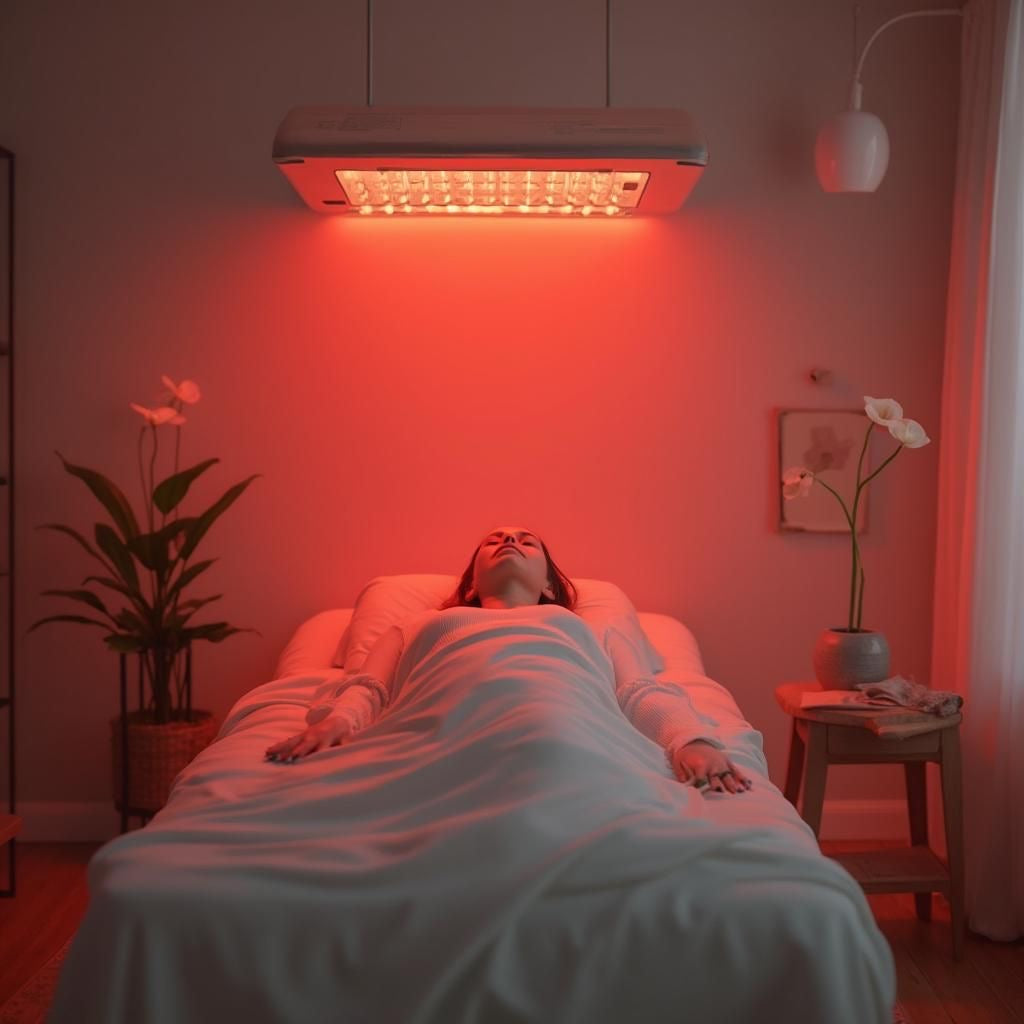Thought Red Light Therapy at Home would turn you into a glowing goddess overnight? Same. But when Red Light Therapy Panels and Red Light Therapy Beds don’t deliver, there’s usually a reason. Short answer: it can work—just not if you’re doing it wrong. Keep reading to learn why.

Unpacking the Hype: Setting Realistic Expectations for Red Light Therapy
The Promise vs. The Reality
What Red Light Therapy Is
Red Light Therapy, or photobiomodulation (PBM), uses specific red and near‑infrared wavelengths to stimulate cell activity.
It energises mitochondria, boosts ATP production, reduces inflammation, and helps repair damaged tissues.
Conditions with Stronger Scientific Backing
There’s good evidence for red light therapy in skin rejuvenation, wound healing, and hair regrowth.
It may also support post‑exercise recovery and minor joint relief.
Areas Where Research is Still Developing or Lacking
Therapies for weight loss, cognitive decline, deep‑tissue healing, or chronic illness are still in early research stages.
So far, the results are inconsistent or lacking strong evidence.
Why Instant Results Are Unrealistic
Cellular Processes Take Time
Red light works by stimulating natural biological responses—not instant changes.
Processes like collagen synthesis or tissue repair happen slowly, over time.
Consistency is Key for Cumulative Effects
Results don’t come overnight.
Most protocols suggest 3–5 sessions per week, with noticeable improvements over several weeks.
Common Pitfalls: Are You Using Red Light Therapy Correctly?
Device Selection and Quality Matters
Wavelengths: Red (630–700 nm) vs. Near‑Infrared (780–850 nm)
Different wavelengths target different depths. Red light helps skin and surface tissue, while near‑infrared penetrates muscles and joints.
Irradiance/Power Output: Why mW/cm² Matters
The device’s intensity (milliwatts per square centimetre) impacts how effective the treatment is. Low-powered devices may not deliver enough light for therapeutic effect.
Avoiding Ineffective or Misleading Devices
Some products are poorly made or use misleading labels like “FDA cleared” when they’re not. Choose panels with verified specs and independent testing where possible.
Crucial Usage Parameters
Treatment Consistency: Importance of Regular Sessions
Skipping sessions slows progress. Stick to a schedule if you want to see benefits.
Optimal Distance from the Device
Too far, and intensity drops. Too close, and you risk skin irritation. Follow the manufacturer’s guidelines, usually around 6–12 inches for Red Light Therapy Panels.
Session Duration: Finding the "Sweet Spot"
Sessions of 10–20 minutes are ideal. Shorter sessions don’t provide enough energy, while too long may cause diminishing returns.
Proper Skin Preparation
Clean, product-free skin ensures light penetrates properly. Avoid using heavy creams, sunscreens, or zinc-based products beforehand.
Eye Protection
Direct red light exposure can strain your eyes. Goggles or eye shields are recommended—especially with larger Red Light Therapy Beds or panels.
Beyond the Device: Lifestyle Factors
The Role of Hydration
Cells function better when hydrated. Drinking enough water can make a big difference in how your skin and body respond.
General Health and Nutrition Support
Sleep, nutrition, and overall wellness all influence your body’s repair response.
Lacking key nutrients can limit the results of even perfect red light usage.
When Red Light Therapy Might Not Be for Everyone (or Needs Caution)

Individual Response and Biological Variability
Why Some People See More Dramatic Results
Genetics, skin tone, age, and baseline health all affect outcomes. Some people respond quickly, others more slowly, and a few may not respond at all.
The "Non‑Responders" Phenomenon
Some individuals show little to no improvement despite correct use. This isn’t uncommon and may require exploring alternative therapies.
Contraindications and Precautions
Medications That Increase Photosensitivity
Certain antibiotics and acne medications can cause heightened sensitivity to red light.
Always check with your doctor or pharmacist.
Pre‑Existing Medical Conditions
Those with lupus, porphyria, eye conditions, or active cancers should avoid use without medical supervision.
Pregnancy and Breastfeeding
There’s limited data on red light therapy during pregnancy or nursing. It’s best to seek professional advice first.
Darker Skin Tones and Hyperpigmentation Risk
Darker skin tones may experience pigmentation changes. A patch test and shorter session times are advised to reduce risk.
Consulting a Professional
When to Seek Expert Advice
If you’re unsure whether red light therapy is suitable for you, speak to a qualified health professional. It’s especially important if you have underlying conditions or are taking medications.
At‑Home Devices vs. Professional Treatments
Clinical-grade devices offer stronger light output and professional oversight.
At-home units can be effective too—but only when used correctly and consistently.
Takeaways
-
Red light therapy doesn’t work if the device is weak, used inconsistently, or applied incorrectly.
-
Wavelength, power output, skin prep, and session timing all matter.
-
Some people are non-responders, and others require more time to see changes.
-
Lifestyle, hydration, and nutrition play important supporting roles.
-
Always use trusted equipment and follow safe-use guidelines.
Conclusion
If you’ve tried Red Light Therapy at Home and seen no results, don’t toss your panel just yet. Chances are, it’s not the concept—it’s the method. Incorrect wavelength, low power, skipped sessions, or even your skincare products could be the problem. With the right tweaks, many people do see results—but only with consistency, correct setup, and realistic expectations.
Glow smart, not just bright.






